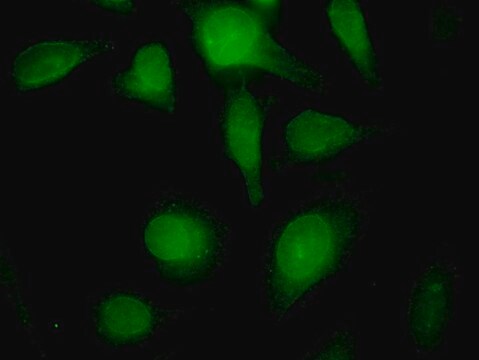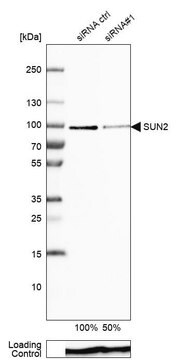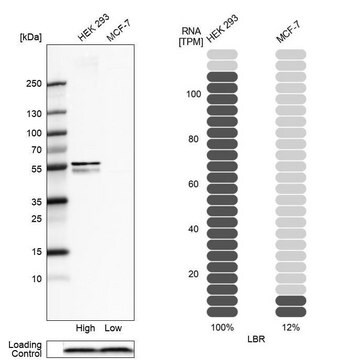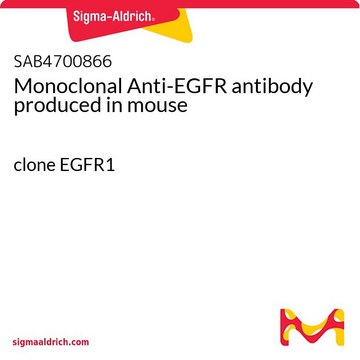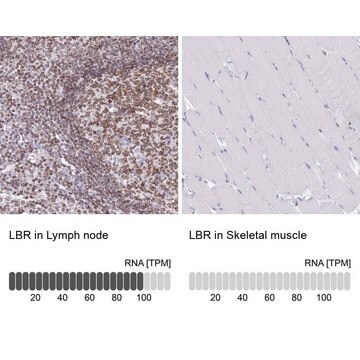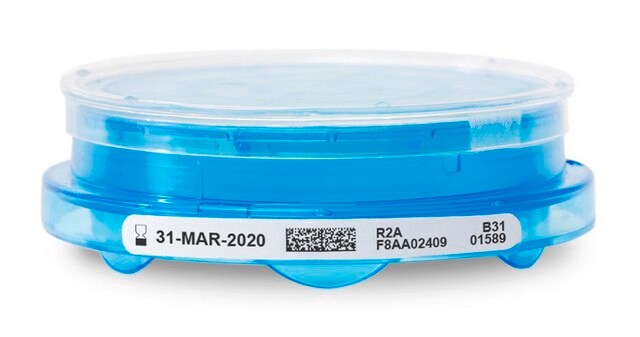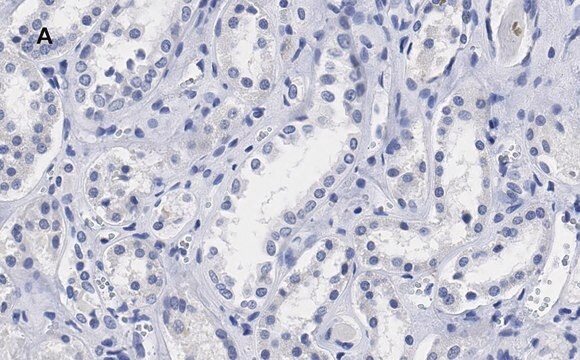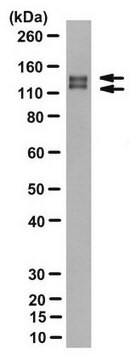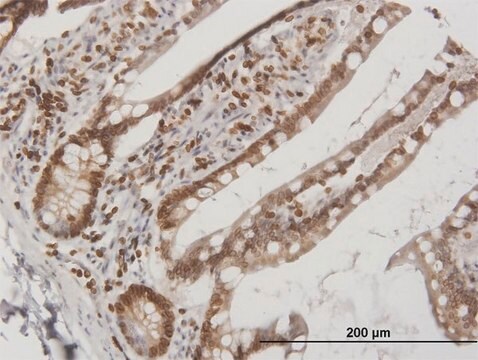MABT831
Anti-Lamin B Receptor (LBR) Antibody, clone BB2SS3F3
clone BB2SS3F3, from mouse
Synonym(s):
LMN2R, Integral nuclear envelope inner membrane protein, LBR
About This Item
Recommended Products
biological source
mouse
Quality Level
antibody form
purified immunoglobulin
antibody product type
primary antibodies
clone
BB2SS3F3, monoclonal
species reactivity
mouse, human
packaging
antibody small pack of 25 μg
technique(s)
immunocytochemistry: suitable
immunofluorescence: suitable
western blot: suitable
isotype
IgG1κ
NCBI accession no.
UniProt accession no.
shipped in
ambient
target post-translational modification
unmodified
Gene Information
human ... LBR(3930)
Related Categories
General description
Specificity
Immunogen
Application
Western Blotting Analysis: A representative lot detected Lamin B Receptor (LBR) in HeLa cell lysate, mouse C2C12 cell lysate, and in adult mouse fibroblasts (MAFs) either LBR+/+ or LBR -/- (Courtesy of Dr. Brian Burke, Institute of Medical Biology, A*STAR, Singapore).
Immunocytochemistry Analysis: A 1:50 dilution from a representative lot detected Lamin B Receptor (LBR) in HeLa cells.
Immunocytochemistry Analysis: A representative lot detected Lamin B Receptor (LBR) in HeLa and NIE-115 cells, as well as in mouse adult fibroblasts (MAF LBR+/+ vs MAF LBR-/-) (Courtesy of Dr. Brian Burke, Institute of Medical Biology, A*STAR, Singapore).
Cell Structure
Quality
Western Blotting Analysis: 2 µg/mL of this antibody detected Lamin B Receptor (LBR) in 10 µg of mouse spleen tissue lysate.
Target description
Physical form
Storage and Stability
Other Notes
Disclaimer
Not finding the right product?
Try our Product Selector Tool.
Storage Class Code
12 - Non Combustible Liquids
WGK
WGK 1
Flash Point(F)
does not flash
Flash Point(C)
does not flash
Certificates of Analysis (COA)
Search for Certificates of Analysis (COA) by entering the products Lot/Batch Number. Lot and Batch Numbers can be found on a product’s label following the words ‘Lot’ or ‘Batch’.
Already Own This Product?
Find documentation for the products that you have recently purchased in the Document Library.
Our team of scientists has experience in all areas of research including Life Science, Material Science, Chemical Synthesis, Chromatography, Analytical and many others.
Contact Technical Service